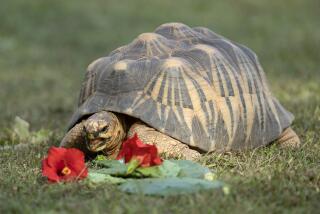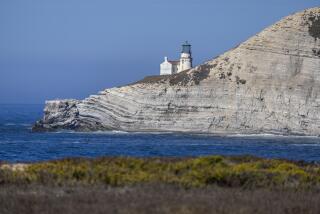San Diego Zoo going deep with its research
- Share via
Reporting from San Diego — The San Diego Zoo is taking over a research facility in one of the most remote and biologically diverse places on earth: the Amazon rain forest of Peru.
Few places on the globe have had as little contact with the modern world, researchers said.
The Cocha Cashu Biological Station is accessible only through a flight into the jungle on a small plane and then a two-day trip by boat up the Amazon River.
It’s a perfect place to study unruffled nature, including more than 1,000 species of birds, 200 of reptiles and amphibians, 125 of mammals. The wide river is chock-full of fish species, some with sharp teeth.
For nearly three decades the station was run by John W. Terborgh, a professor emeritus at Duke University and a pioneer in the field of tropical research and conservation. Terborgh, considered a legend by San Diego Zoo officials, is retiring.
Under an agreement signed last week with the Peruvian government, the zoo will continue and expand the station’s research, beginning this summer. With an annual budget of $250,000, zoo researchers plan to upgrade the station, including installing a shower.
“That will eliminate the need to bathe in the river with the piranhas,” said Ron Swaisgood, director of applied animal ecology at the zoo’s Institute for Conservation Research.
The station is inside the 6,000-square-mile Manu Biosphere Reserve, part of a national park that is off-limits to the hunting and logging that have ravaged much of the Amazon region.
Cocha Cashu will become the zoo’s first South American-based field station. In the past, zoo researchers have studied the Andean bear.
The zoo will work with Peruvian researchers already at the site. Other researchers and graduate students from around the world will be encouraged to come to Cocha Cashu.
“We’re inheriting a legacy of inestimable value,” said Allison Alberts, chief conservation and research officer for San Diego Zoo Global, which manages research programs in 35 countries.
The station’s current website warns: “There is no dormitory. You need to bring a tent, sleeping bag, tarp, and pillow. If you are planning a long stay, bring a mattress.”
Monkeys are thick in the trees near the station. Lowland tapirs, giant river otters and giant river turtles are nearby. Deeper into the dense greenery are the jaguars. Dung beetles carpet the forest floor.
The region is populated mainly by the native Indians of the Machigenga tribe. Farther out are five indigenous groups that remain “uncontacted” by Western society.
The venture comes as universities and other traditional research facilities — for financial and other reasons — are cutting back on on-site ecological studies, zoo officials said. The zoo is preparing a website to get word out to the scientific community.
“We have to market nature back to students and professors,” Swaisgood said.
More to Read
Sign up for Essential California
The most important California stories and recommendations in your inbox every morning.
You may occasionally receive promotional content from the Los Angeles Times.










